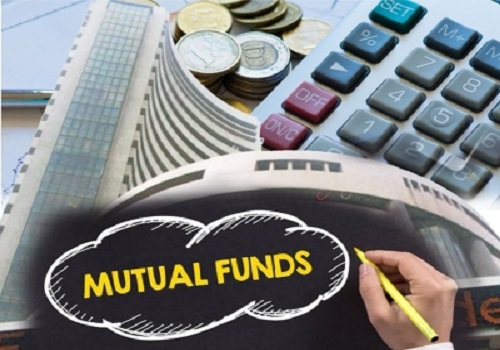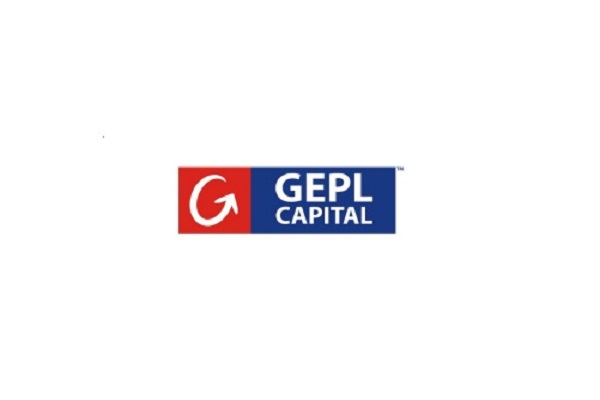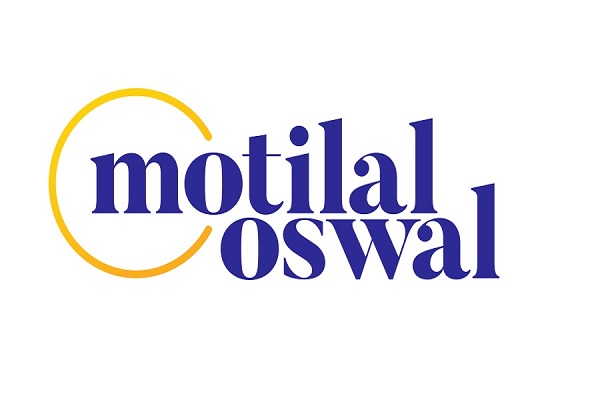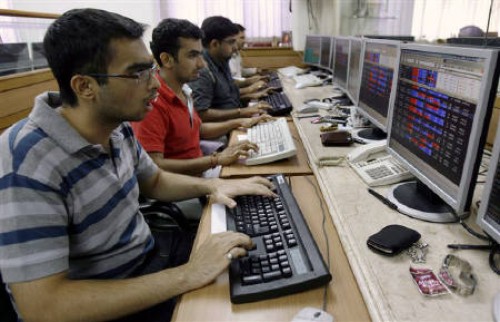Aluminium trading range for the day is 239.5-246.1 - Kedia Advisory

Gold
Gold prices saw a slight decline of 0.16%, settling at 90,728 as investors awaited further details on U.S. President Donald Trump's tariff policies. The introduction of a 10% minimum tariff on most imported goods, with significantly higher duties on select countries, has heightened concerns of inflation and economic slowdown both in the U.S. and globally. Despite this, gold found support from expectations of interest rate cuts, central bank purchases, and robust demand for gold-backed ETFs. Notably, the Chinese gold ETF added 233,000 ounces of notional bullion in the past week, signaling continued investment interest. In the physical gold market, demand in India remained subdued due to record-high prices and the financial year-end accounting closure among jewelers. Indian dealers offered discounts of up to $33 per ounce, down from $41 in the previous week. Similarly, in China, gold was traded at discounts ranging from $4 to a $1 premium. A sharp drop in China's net gold imports via Hong Kong further highlighted weakening demand. Other Asian markets such as Singapore and Japan also reflected muted buying interest, with varying premiums and discounts. From a technical perspective, fresh selling pressure was observed as open interest increased by 0.36% to settle at 18,615 contracts. Gold prices dropped by 147 rupees, with key support levels at 90,420 and 90,115, while resistance is positioned at 91,130. A breach above this level could push prices toward 91,535, suggesting potential volatility ahead.
Trading Ideas:
* Gold trading range for the day is 90115-91535.
* Gold steadied as investors awaited details of U.S. President Donald Trump's tariff plans.
* President Trump announced higher than expected tariffs on over 180 countries and territories.
* Gold was supported by expectations of interest rate cuts, central bank buying, and strong demand for gold ETFs.
Silver
Silver prices edged up by 0.29%, settling at 99,753 as investors reacted to President Donald Trump’s announcement of reciprocal tariffs, set to take effect on Wednesday. The 10% minimum tariff on most U.S. imports, with significantly higher duties on select countries, has fueled concerns of inflation and economic slowdowns worldwide. Meanwhile, weak U.S. economic data showed a contraction in the manufacturing sector in March and a greater-than-expected decline in job openings to 7.57 million in February. On the supply and demand front, the silver market is set to face a significant deficit for the fifth consecutive year in 2025, driven primarily by industrial demand. Silver industrial fabrication is expected to increase by 3%, surpassing 700 million ounces for the first time. Green economy applications will continue to provide structural support for silver consumption. Meanwhile, silver physical investment is forecast to rise by 3%, supported by improved demand in Europe and North America. However, jewelry and silverware demand is projected to decline by 6%, with India leading the decline due to high local prices. From a technical perspective, silver is experiencing short covering as open interest declined by 0.12% to 19,339 contracts. Prices increased by 292 rupees, with support at 99,265 and a lower test at 98,770. Resistance is seen at 100,315, with a breakout potentially pushing prices toward 100,870.
Trading Ideas:
* Silver trading range for the day is 98770-100870.
* Silver gains as investors braced for President Donald Trump’s announcement of reciprocal tariffs.
* Market participants weighed concerns over an escalating global trade war.
* US economic data showed the manufacturing sector slipped into contraction in March
Crude oil
Crude oil prices edged up by 0.47%, settling at 6,147 amid heightened geopolitical risks, including U.S. President Donald Trump’s threats of secondary duties on Russian oil and increased sanctions on Iran. Additionally, API data showed a significant build in U.S. crude inventories, with stocks rising by 6 million barrels, while gasoline supplies fell by 1.6 million barrels. Despite concerns that Trump’s reciprocal tariffs could dampen fuel demand, traders remained optimistic. U.S. crude oil production fell by 305,000 barrels per day (bpd) in January, marking the sharpest monthly decline in a year, bringing output to 13.15 million bpd. The Energy Information Administration (EIA) also revised down its December production estimates by 40,000 bpd to 13.45 million bpd. Meanwhile, the EIA reported an unexpected crude inventory build of 6.165 million barrels, defying forecasts of a 2 million barrel draw. On the global supply side, the International Energy Agency (IEA) predicted a market surplus of 600,000 bpd this year, which could widen to 1 million bpd if OPEC+ extends its production increases. The IEA also cut its 2025 demand growth forecast by 70,000 bpd to 1 million bpd, citing weaker-than-expected consumption. Technically, fresh buying activity was observed, with open interest rising by 4.63% to 7,117 contracts. Crude oil faces support at 6,081, with a potential test at 6,014, while resistance is seen at 6,185, and a breakout could push prices toward 6,222.
Trading Ideas:
* Crudeoil trading range for the day is 6014-6222.
* Crude oil gains amid Trump's recent threat of secondary duties on Russian oil and increased sanctions on Iran
* U.S. crude oil production fell by 305,000-barrels-per-day (bpd) to 13.15 million bpd in January
* Crude oil inventories in the US rose by 6.165 million barrels - EIA
Natural gas
Natural gas prices climbed by 2.05%, settling at 347.8, driven by a decline in daily output and higher-than-expected demand forecasts for the next two weeks. This price gain occurred despite a drop in gas flows to U.S. liquefied natural gas (LNG) export plants. U.S. gas stockpiles remain about 5% below normal levels for this time of year, following extreme cold in January and February that led to record storage withdrawals. According to LSEG data, average gas production in the Lower 48 U.S. states has fallen to 104.4 billion cubic feet per day (bcfd) in April, down from a record 106.2 bcfd in March. Meanwhile, gas demand, including exports, is projected to rise from 103.3 bcfd this week to 105.4 bcfd next week, higher than earlier forecasts. In LNG exports, flows to major U.S. LNG plants have dropped to 14.9 bcfd in April, down from March’s record of 15.8 bcfd. On the storage front, U.S. utilities added 37 billion cubic feet (bcf) of gas to storage for the week ending March 21, surpassing market expectations of a 25 bcf build. Technically, fresh buying was observed as open interest increased by 2.85% to 11,111 contracts. Support is at 340.7, with a potential test at 333.7, while resistance stands at 352.4, with a breakout potentially pushing prices to 357.1.
Trading Ideas:
* Naturalgas trading range for the day is 333.7-357.1.
* Natural gas climbed on a drop in daily output.
* US gas output on track to drop from record high in March
* US LNG export feedgas on track to drop from record high in March
Copper
Copper prices declined by 0.37%, settling at 890.6, as investors remained cautious ahead of U.S. President Donald Trump’s announcement of reciprocal tariffs. Despite the uncertainty surrounding trade policies, China’s manufacturing sector showed resilience, with the Caixin/S&P Global manufacturing PMI rising to 51.2 in March from 50.8 in February, signaling growth. Supply-side concerns provided some support for copper prices, as a shortage of copper concentrate pushed treatment and refining charges (TC/RCs) into negative territory. Additionally, Glencore declared force majeure on shipments from its Altonorte smelter in Chile, where production has been halted. Copper production in Chile, the world's largest supplier, fell 2.1% year-on-year in January to 426,889 metric tons. In contrast, China’s refined copper production rose by 3.7% year-on-year to 2.3 million metric tons in the first two months of 2025, reducing the country's reliance on imports. However, global refined copper markets remained in deficit, with a shortfall of 19,000 metric tons in January, slightly improving from a 22,000 metric ton deficit in December. China’s unwrought copper imports declined by 7.2% to 837,000 metric tons in the first two months of 2025, reflecting increased domestic smelting capacity. Technically, the market saw fresh selling pressure, with open interest rising by 2.18% to 8,160 contracts while prices declined by 3.3 rupees. Copper has support at 886.8, with a potential test at 883, while resistance stands at 896.6, with a breakout possibly pushing prices to 902.6.
Trading Ideas:
# Copper trading range for the day is 883-902.6.
# Copper dropped as cautious investors awaited details of reciprocal tariffs from U.S. President Donald Trump.
# The Caixin/S&P Global manufacturing PMI climbed to 51.2 in March, from 50.8 in February.
# Copper output in Chile, fell 5.4% year-on-year in February to 397,396 metric tons.
Zinc
Zinc prices declined by 1.23%, settling at 264.35, as uncertainty surrounding U.S. tariffs overshadowed positive economic data from China. Investors remained cautious as they awaited details on President Donald Trump’s planned reciprocal tariffs, which could impact global trade flows. Despite these concerns, China’s manufacturing sector showed resilience, with the Caixin/S&P Global manufacturing PMI reflecting strong factory activity as producers rushed shipments ahead of potential tariffs. Supply concerns provided some support to zinc prices. The global zinc market deficit narrowed to 10,000 metric tons in January, down from 41,100 metric tons in December, according to the International Lead and Zinc Study Group (ILZSG). However, zinc inventories in Shanghai Futures Exchange warehouses fell by 6.9% from last Friday, indicating tightening supply. Additionally, Nyrstar announced a 25% production cut at its Hobart zinc operations in Australia due to financial constraints, impacting its annual output capacity of 260,000 metric tons. Meanwhile, production at Alaska’s Red Dog Mine, which accounts for 10% of global output, is expected to slow in 2025 as ore reserves near depletion. China’s refined zinc production dropped over 4% year-on-year in February, with cumulative production for January-February down by more than 6% year-on-year. Technically, the market witnessed fresh selling, with open interest rising by 15.65% to 3,399 contracts while prices declined by 3.3 rupees. Zinc has support at 262.3, with further downside potential toward 260.2, while resistance is seen at 267.5, with a breakout possibly pushing prices to 270.6.
Trading Ideas:
* Zinc trading range for the day is 260.2-270.6.
* Zinc prices edged lower as uncertainty over U.S. tariffs outweighed positive data from China.
* China's manufacturing sector was expanding more than expected.
* Global zinc market deficit fell to 10,000 metric tons in January from 41,100 tons in December.
Aluminium
Aluminium prices declined by 0.98%, settling at 242.2, as concerns over impending U.S. tariffs and weak global demand weighed on sentiment. Factory activity across Asia showed signs of weakness, with Japan, South Korea, and Taiwan reporting declines in manufacturing. The announcement of reciprocal tariffs by U.S. President Donald Trump further pressured financial markets, raising uncertainty over global trade. On the supply side, aluminium inventories in Shanghai Futures Exchange warehouses increased by 1.4% from last Friday, reflecting a buildup in stockpiles. While major alumina producers in Guinea, Australia, and China expanded capacity to recover from last year’s disruptions, global primary aluminium output in February fell by 0.9% year-on-year to 5.645 million tonnes, according to the International Aluminium Institute. China produced a record 44 million tonnes of aluminium in 2024, but with Beijing’s production cap at 45 million tonnes, output growth is expected to slow. JP Morgan forecasts a global aluminium deficit exceeding 600,000 metric tons by 2025 due to tightening supply growth. Meanwhile, aluminium smelters in China saw improved profitability in February as alumina prices declined. Technically, the market saw fresh selling pressure, with open interest increasing by 10.04% to 4,023 contracts. Aluminium has immediate support at 240.8, with a further decline possible toward 239.5, while resistance is seen at 244.1, with an upward move potentially testing 246.1.
Trading Ideas:
* Aluminium trading range for the day is 239.5-246.1.
* Aluminium dropped as Asia's factory activity mostly weakened in March.
* Japan's factory activity fell at the fastest pace in a year
* Aluminium inventories in warehouses monitored by the Shanghai Futures Exchange rose 1.4% from last Friday
Cottoncandy
Cottoncandy prices rose by 0.8% to settle at 55,620, driven by the USDA's lower-than-expected U.S. planting estimates. The USDA reported that U.S. all-cotton intended planting for 2025 is set at 9.8 million acres, a 12% decline from 2024, which fueled bullish sentiment in the market. Similarly, the Cotton Association of India (CAI) further reduced its 2024-25 crop estimate by 2% to 295.30 lakh bales due to a lower-than-expected crop in central India. The government also revised its second advance cotton crop estimate downward by 1.5% to 294.25 lakh bales. The cotton pressing estimate for Gujarat and Maharashtra declined by 4 lakh and 3 lakh bales, respectively, while Odisha saw a slight increase of 0.55 lakh bales. CAI expects cotton imports to double to 32 lakh bales this season, reflecting a significant rise from 15.20 lakh bales last season. Meanwhile, exports are forecasted to drop by 40% to 17 lakh bales, and closing stocks at the end of September 2025 are projected to be lower at 23.49 lakh bales. On the global front, Brazil’s 2024-25 cotton production is expected to increase by 1.6% to 3.7616 million tons, with a 4.8% expansion in planting area, signaling ample supply. However, mill buying remains limited as they are well-stocked. Technically, the market is under fresh buying, with open interest increasing by 2.7% to 228 contracts. Cottoncandy has immediate support at 55,380, with a potential test at 55,150, while resistance is at 55,760, and a breakout above could push prices toward 55,910.
Trading Ideas:
* Cottoncandy trading range for the day is 55150-55910.
* Cotton rose after USDA report showed lower-than-expected U.S. planting estimates.
* USDA's planting intentions report showed U.S. all-cotton intended planting of 9.8 million acres for 2025, a 12% reduction from 2024.
* CAI has further reduced its 2024-25 crop estimate by 2 per cent to 295.30 lakh bales.
* In Rajkot, a major spot market, the price ended at 25691.75 Rupees dropped by -0.09 percent.
Turmeric
Turmeric futures surged by 6% to settle at ?14,918, driven by lower-than-expected arrivals and strong buying interest. Tight supply conditions in key mandis, particularly from regions like Nanded—where yields are reportedly down 10–15% due to small rhizomes and crop rots—have fueled bullish sentiment. Although the area under turmeric cultivation has increased to 3.30 lakh hectares this season (a 10% rise from last year), production may not follow suit due to untimely rains impacting yield. As a result, 2024’s overall turmeric output is expected to remain near last year's level of 10.75 lakh tonnes, with only a marginal variation of 3–5%. On the export front, demand has shown significant strength. Between April and December 2024, turmeric exports rose by 13% to 1.37 lakh tonnes, surpassing 2020’s full-year export record. December 2024 alone recorded 15,319.82 tonnes of exports, up 20.43% from November and up 46.94% from December 2023. Meanwhile, imports during April–December 2024 jumped 84.35% YoY to 19,644.14 tonnes, although December imports declined 44.66% MoM, showing limited dependency on foreign turmeric. Technically, the market is under short covering as open interest dropped by 14.73% to 5,180 contracts, indicating that traders are exiting short positions. Prices rose ?844, confirming upward momentum. Immediate support is seen at ?14,354, and a break below may test ?13,792. On the upside, resistance is seen at ?15,198; a breakout could lead to a test of ?15,480.
Trading Ideas:
* Turmeric trading range for the day is 13792-15480.
* Turmeric rose as lower-than-expected arrivals restricted supplies, leading to strong buying interest.
* Exports continued to pick up in the second half of 2024, with shipments reaching a four-year high.
* New crop yields are expected to be 10-15% lower this year, with the Nanded region particularly affected.
* In Nizamabad, a major spot market, the price ended at 14256.65 Rupees gained by 5.22 percent.
Jeera
Jeera futures surged by 3.52% to settle at ?22,960, supported by firm domestic demand and active export buying, particularly from Gulf countries and Europe. The upside came amid tight near-term supplies due to limited arrivals from Rajasthan and a delayed start to the new crop in Gujarat, caused by unfavorable weather. Sowing in major producing states like Gujarat and Rajasthan began a month late this season. Despite the sowing delay, the crop conditions remain favorable, and production is expected to match last year's levels. As per Spices Board data, India’s jeera production is estimated at 8.6 lakh tonnes from 11.87 lakh hectares during 2023–24, significantly higher than last year’s 5.77 lakh tonnes from 9.37 lakh hectares. Although farmers are still holding around 20 lakh bags of jeera, only 3–4 lakh bags are expected to be traded by season-end, implying a carryover of nearly 16 lakh bags. India continues to dominate the global cumin trade due to its competitive pricing. Indian jeera is priced at $3,050 per tonne, nearly $200–250 cheaper than Chinese cumin, attracting buyers like China and supporting market sentiment. Export activity has been robust, with jeera exports rising by 70.72% to 1.65 lakh tonnes during April–December 2024. December exports alone rose 56.45% month-on-month and 47.77% year-on-year. Technically, the market witnessed short covering as open interest dropped by 7.06% to 2,409 while prices rose ?780. Immediate support lies at ?22,420, and a break below could push prices towards ?21,880. Resistance is placed at ?23,280, and a move above may lead to a test of ?23,600.
Trading Ideas:
* Jeera trading range for the day is 21880-23600.
* Jeera gained amid price support from domestic demand, as well as export activity from Gulf countries.
* The current season is expected to have similar production levels as last year due to better crop conditions and good sowing.
* Jeera exports during Apr - Dec 2024, rose by 70.72 percent at 165,084.40 tonnes as compared to 96,701.43 tonnes exported during Apr- Dec 2023.
* In Unjha, a major spot market, the price ended at 22542.2 Rupees gained by 0.48 percent.
Views express by all participants are for information & academic purpose only. Kindly read disclaimer before referring below views




















